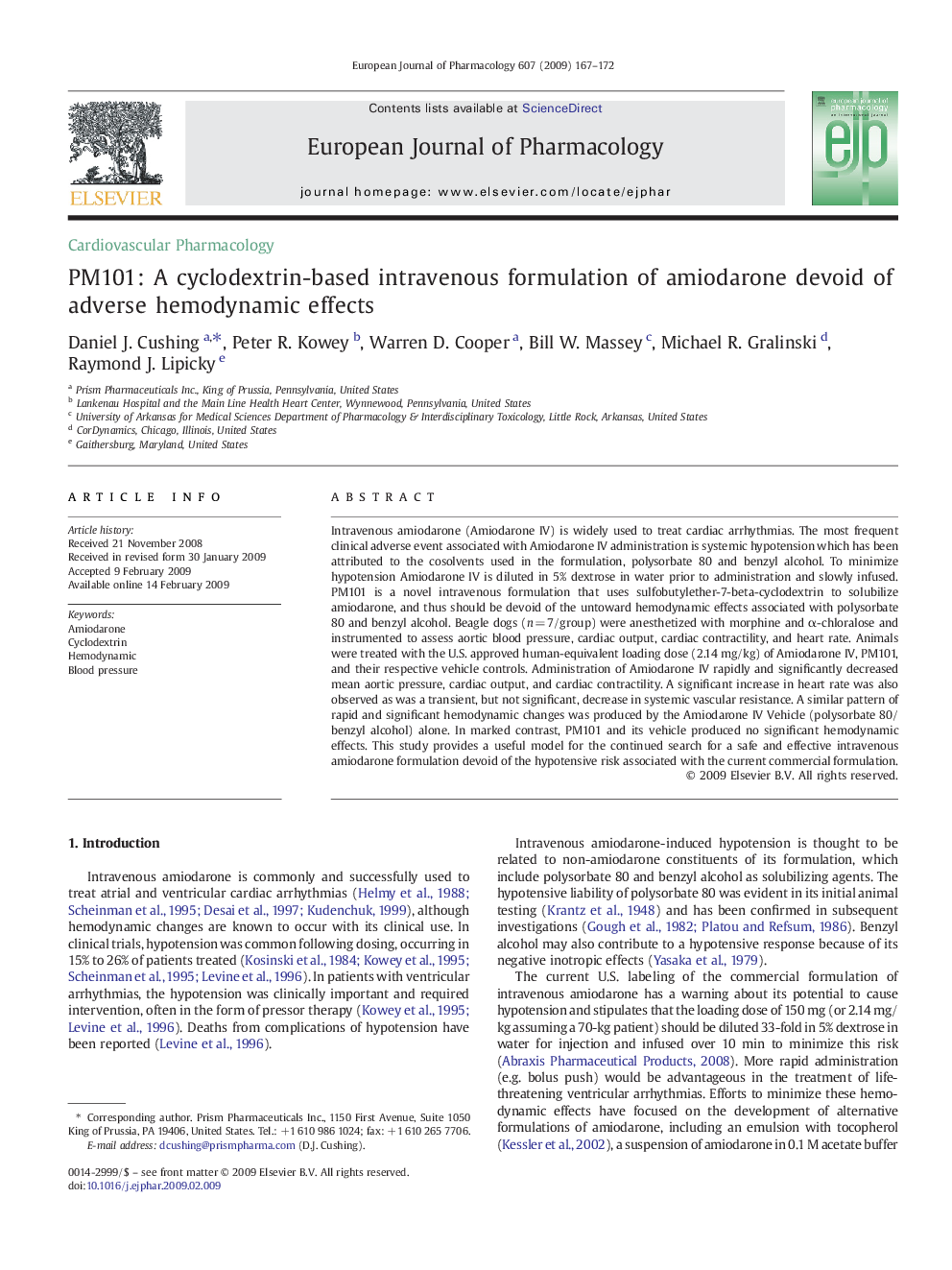| Article ID | Journal | Published Year | Pages | File Type |
|---|---|---|---|---|
| 2534451 | European Journal of Pharmacology | 2009 | 6 Pages |
Intravenous amiodarone (Amiodarone IV) is widely used to treat cardiac arrhythmias. The most frequent clinical adverse event associated with Amiodarone IV administration is systemic hypotension which has been attributed to the cosolvents used in the formulation, polysorbate 80 and benzyl alcohol. To minimize hypotension Amiodarone IV is diluted in 5% dextrose in water prior to administration and slowly infused. PM101 is a novel intravenous formulation that uses sulfobutylether-7-beta-cyclodextrin to solubilize amiodarone, and thus should be devoid of the untoward hemodynamic effects associated with polysorbate 80 and benzyl alcohol. Beagle dogs (n = 7/group) were anesthetized with morphine and α-chloralose and instrumented to assess aortic blood pressure, cardiac output, cardiac contractility, and heart rate. Animals were treated with the U.S. approved human-equivalent loading dose (2.14 mg/kg) of Amiodarone IV, PM101, and their respective vehicle controls. Administration of Amiodarone IV rapidly and significantly decreased mean aortic pressure, cardiac output, and cardiac contractility. A significant increase in heart rate was also observed as was a transient, but not significant, decrease in systemic vascular resistance. A similar pattern of rapid and significant hemodynamic changes was produced by the Amiodarone IV Vehicle (polysorbate 80/benzyl alcohol) alone. In marked contrast, PM101 and its vehicle produced no significant hemodynamic effects. This study provides a useful model for the continued search for a safe and effective intravenous amiodarone formulation devoid of the hypotensive risk associated with the current commercial formulation.
